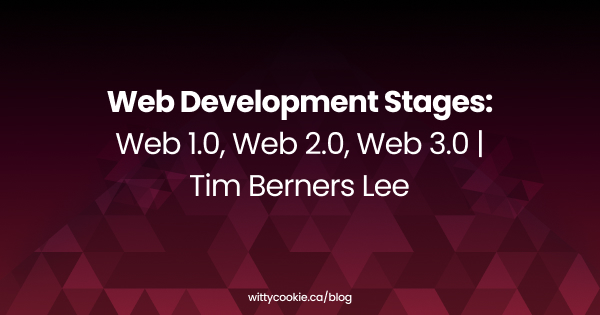Web Development Stages: Web 1.0, Web 2.0, Web 3.0 | Tim Berners Lee
Evolution of the Web – Tim Berners Lee WWW
Since the world wide web was founded by Tim Berners Lee, website technology has gone through different web development stages since the origin of websites. With digitalization, the internet and web has become an integral and core part of our lives. But with the omnipresent feature of the internet these days, it is easy to forget that the web itself has gone through different stages of growth and evolution itself to get to where it is today. These stages of evolution are popularly named “Web 1.0”, “Web 2.0”, and “Web 3.0”. So, what’s the difference between these stages of web technology?
Web 1.0
First founded by Tim Berners-Lee, this is the “readable” phrase of the World Wide Web with flat data. In Web 1.0, there is only limited interaction between sites and web users. Stage 1.0 is simply an information portal where users can passively receive information without being given the opportunity to post reviews, comments, and feedback.
Web 2.0
This is the “writable” phrase of the World Wide Web with interactive data. Unlike Web 1.0, Web 2.0 facilitates interaction between web users and sites, consequently allowing users to interact more freely and dynamically with one another. Stage 2.0 encourages participation, collaboration, and information sharing amongst users. Examples of Web 2.0 applications are YouTube, Wiki, Flickr, Facebook, and so on.
Web 3.0 (Web3)
This is the “executable” phrase of Word Wide Web with dynamic applications, interactive services, and “machine-to-machine” interaction. Web 3.0 is a semantic web which refers to the future. In 3.0, computers can interpret information like humans and intelligently generate and distribute useful content tailored to the needs of users. One example of Web 3.0 is TiVo, a digital video recorder whose recording program can search the web and read what it finds to you based on your preferences.
Why understanding the evolution of the web is important
With the evolution of web technology since its founding by Tim Berners-Lee, it is amazing to see where we have come from as well as to think about the possibility of where we can go in the future! As website technology becomes more advanced and increasingly integrated into our lives, it is important to understand the history and growth of how this technology came to be so we can enter the future with more understanding of the past so we can gauge the potential of the future.
To read more on the evolution of web technology, check out this article by Eploy!



